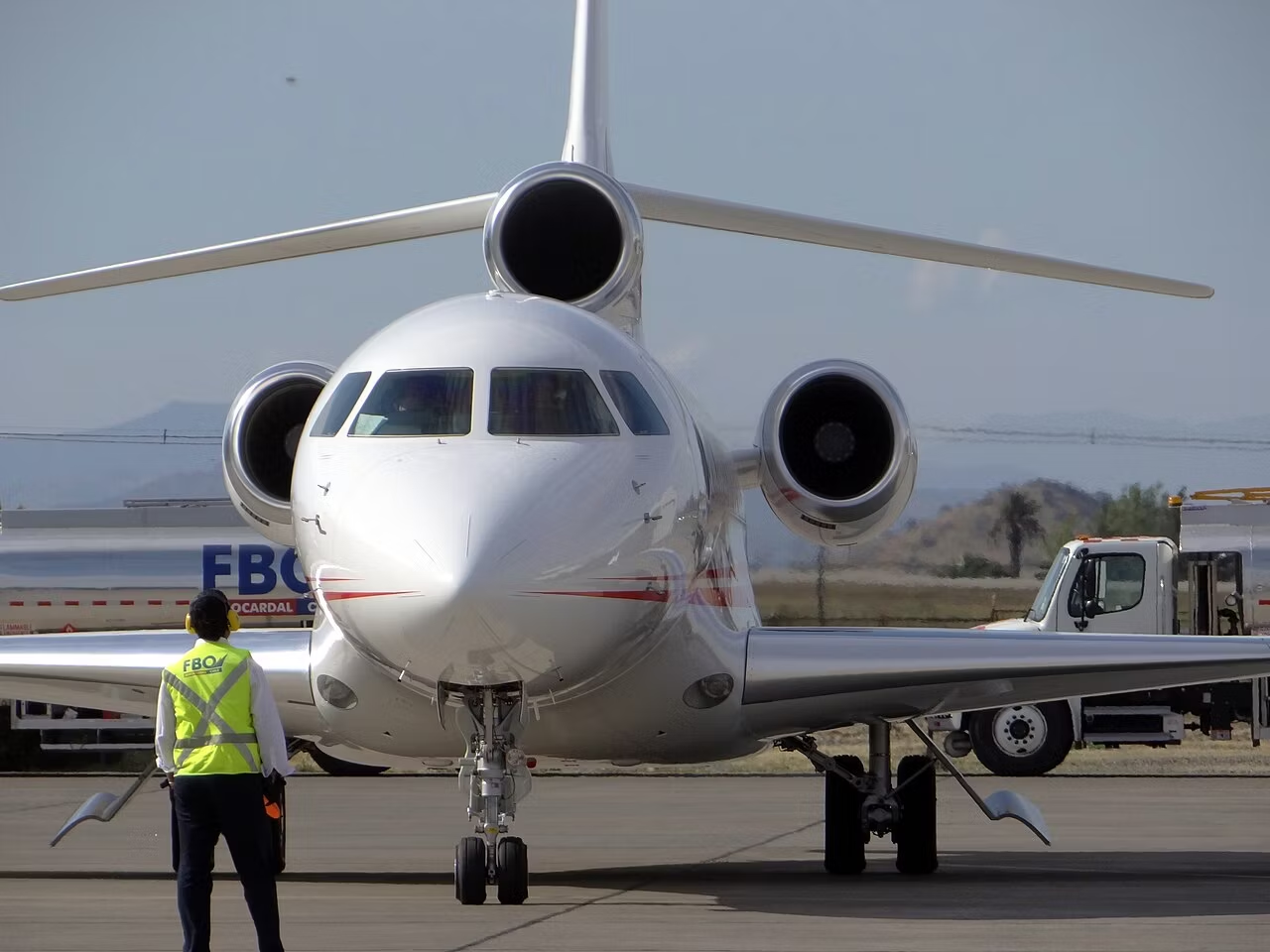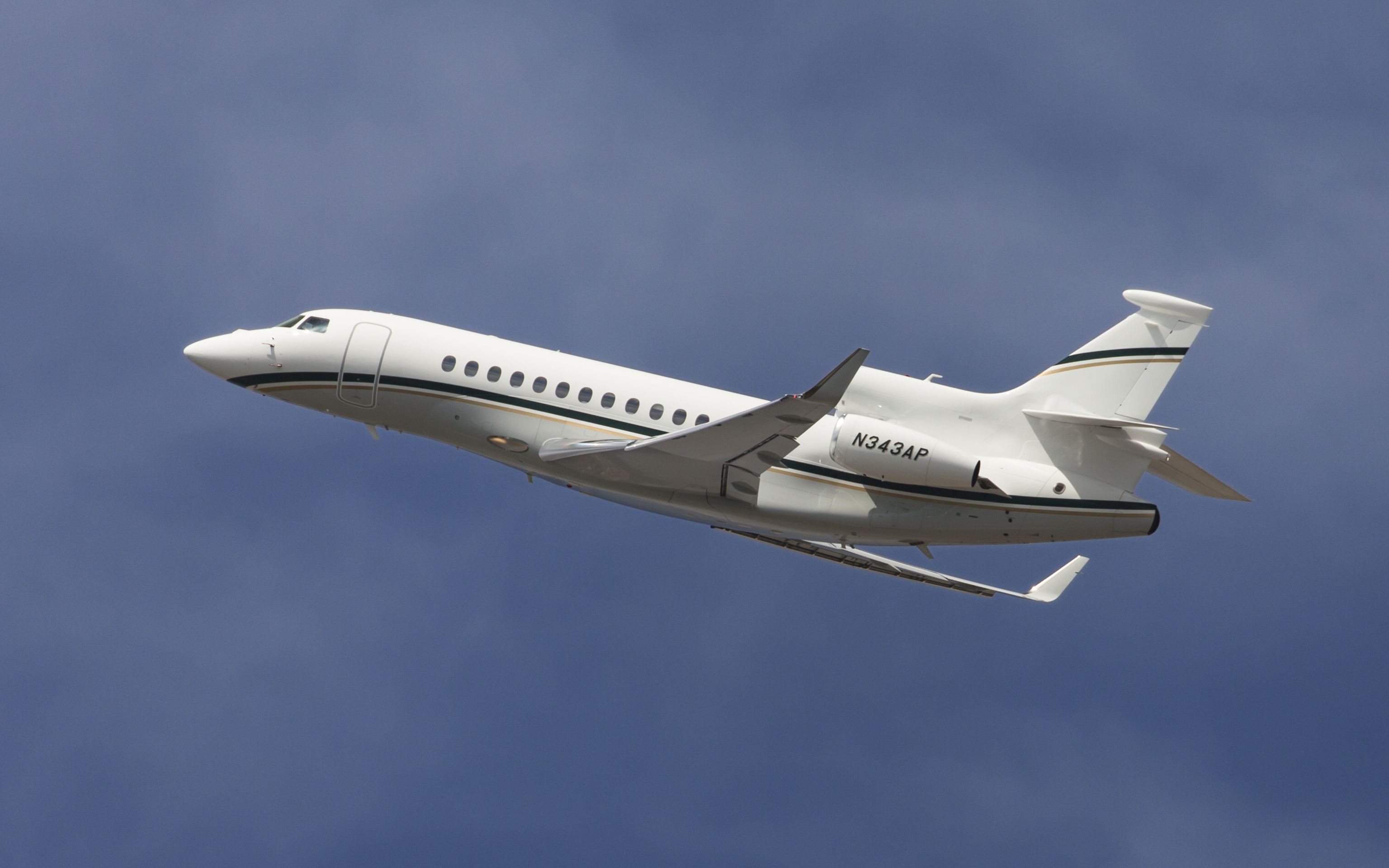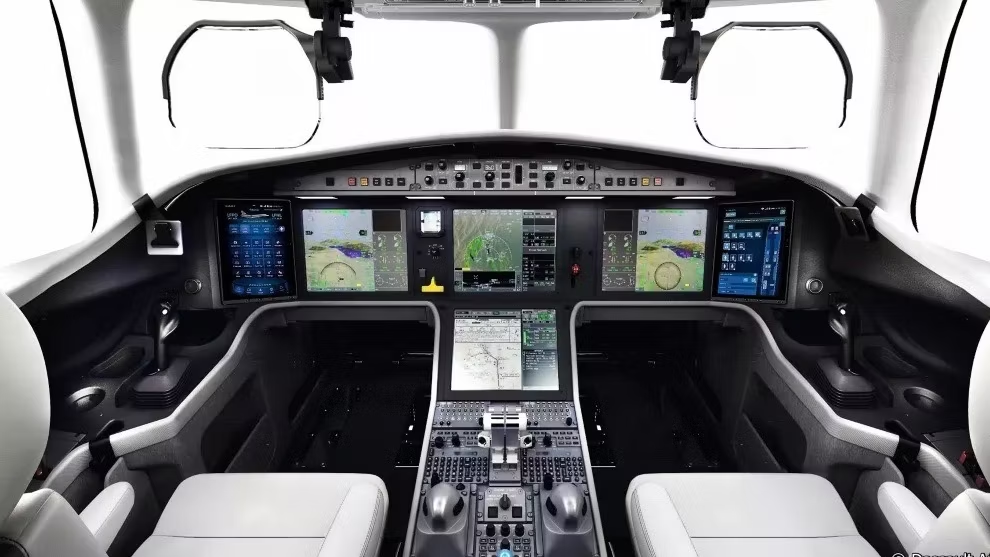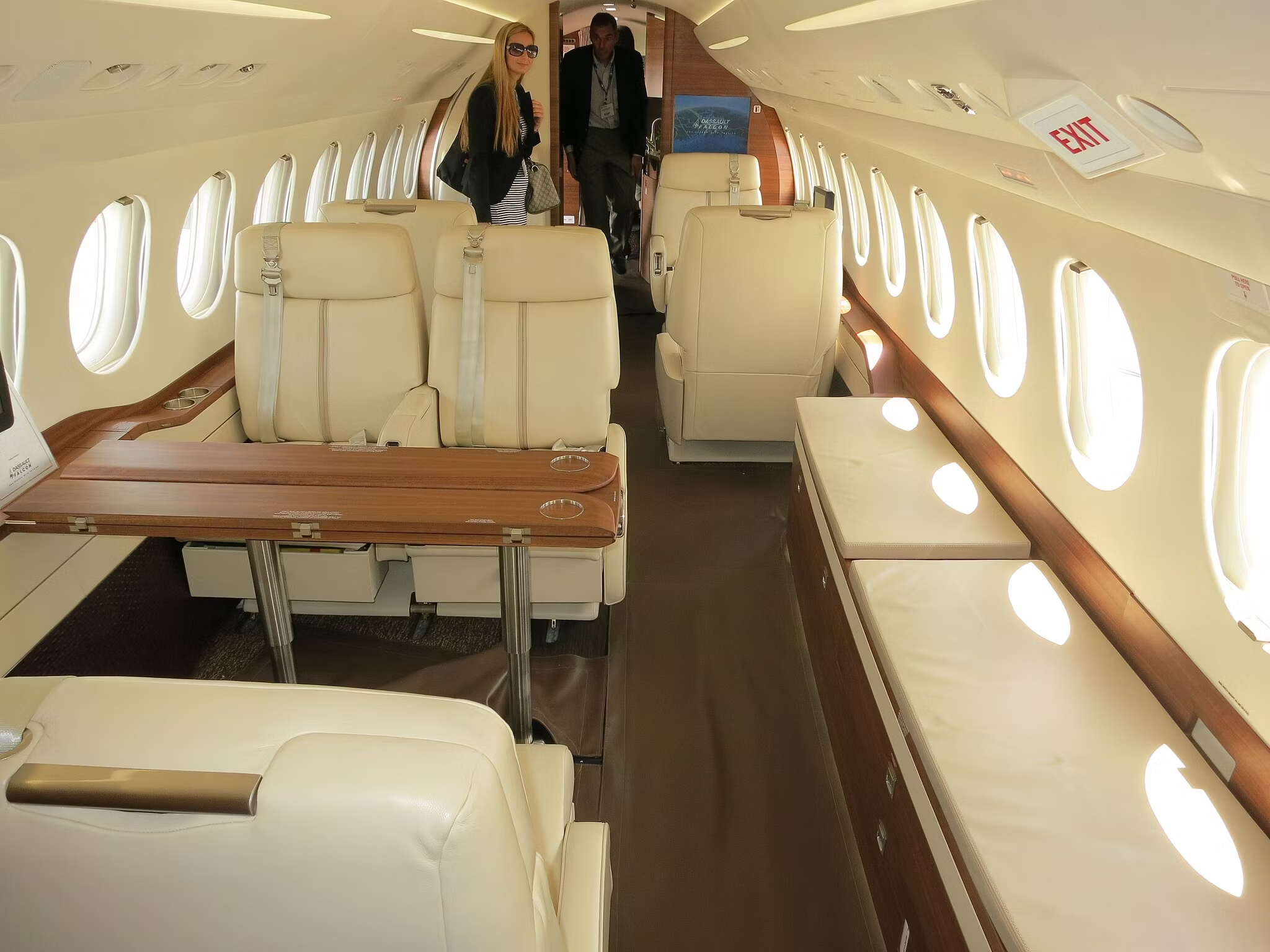The Falcon 7X is a three-engine business jet built by French aircraft manufacturer Dassault. It was the second-largest Falcon to be built when it was introduced in 2007 and was developed from the Falcon 900.
Up until 2020, 289 of the Falcon 7X have been built and it is one of three trijets still in production today. It has a large cabin and is an ultra-long-range business jet that competes with the similar Gulfstream G550 and Bombardier Global Express. Let’s look in more detail at the Falcon 7X.
Early days
Although introduced at the Paris Air Show in 2001, the aircraft took some time to roll off the assembly line. It took its first flight on May 5, 2005, and endured 15 months of testing with three aircraft. The first and second aircraft were tested at two flight levels, testing all systems, acceleration and deceleration, and autothrottle and autopilot operation.
The third aircraft was fitted with a full interior and was tested for long-range endurance, before finally being certified in April 2007 by both the Federal Aviation Administration (FAA) and the European Union Aviation Safety Agency (EASA). The aircraft went into service in June 2007.
Development features
Although developed from the earlier Falcon 900, the Falcon 7X had a new high-speed wing that was longer and a fuselage that was 20% longer. The cockpit had a curved windshield.
The original engines were the Honeywell FX5 engines which produced 18,000 pounds of thrust, but these were later changed. The structure was simplified to reduce cost and weight. The high Transonic wing improved the lift-to-drag ratio by 10% over previous Falcons.
Photo: Santi Rodriguez | Shutterstock
The finer details
The Falcon 7X has a range of 5,950 nautical miles or 11,019 kilometers. The three engines were changed to the rear-mounted Pratt and Whitney Canada PWC307A turbofans with 18,000 pounds of thrust.
It can fly up to 51,000 feet and has a cruise speed of Mach 0.8 or 459 knots or 528 miles per hour (850 km/h). It has a maximum speed of Mach 0.9 or 516 knots or 594 miles per hour (956 km/h). The aircraft can fly for up to eleven and a half hours without the need to refuel.
The cockpit
The cockpit has the Honeywell Primus Epic avionics suite and the EASy enhanced avionics system flight deck. The pilot workload is reduced and situational awareness is increased.
The Falcon 7X is an aircraft with fly-by-wire controls and uses fighter jet technology. This improves intuitive responsiveness and precision. It has side-stick controls and fuel reduction is 30% less than jets of a comparable size.
Photo: Dassault Aviation
Aircraft specifications
(Data from Dassault Aviation)
|
Variant |
Falcon 7X |
|---|---|
|
Cockpit crew |
Two |
|
Capacity |
12 to 16 passengers |
|
Cabin section |
2.34 m (7.67 ft) width, 1.88 m (6.17 ft) headroom |
|
Cabin length |
11.91 m (39.07 ft) |
|
Length |
23.38 m (76.08 ft) |
|
Height |
7.83 m (25.67 ft) |
|
Wingspan |
26.21 m (86 ft) |
|
Wing area |
70.7 m2 (761 sq ft) |
|
MTOW |
31,751 kg (70,000 lb) |
|
Max payload |
1,996 kg (4,400 lb) |
|
Fuel capacity |
14,488 kg (31,940 lb) |
|
Turbofans (×3) |
P&WC PW307A |
|
Thrust |
28.48 kN (6,402 lbf) |
|
Range (8 passengers) |
5,950 nmi (11,019 km; 6,847 mi) |
|
Ceiling |
15,545 m (51,000 ft) |
|
Max speed |
Mach 0.9 (516 kn; 956 km/h; 594 mph) |
|
Cruise speed |
Mach 0.8 (459 kn; 850 km/h; 528 mph) |
|
Takeoff BFL |
1,740 m (5,710 ft) |
|
Landing |
631 m (2,070 ft) |
|
Avionics |
Falcon Enhanced Avionics System (EASy) Flight Deck |
Inside the cabin
The cabin is 8 feet longer than the Falcon 900 and has a lower cabin altitude of 6,000 feet. Although it can be configured for up to 19 passengers and three crew, it usually seats between 12 and 14 and sleeps six with lie-flat seats and divans (depending on the chosen configuration.
There is a galley for a flight attendant to prepare meals and drinks and a crew rest area. There is a lavatory and washroom at the rear of the aircraft which can also be fitted with a shower.
Cost of the aircraft
In 2001, the cost of the Falcon 7X was just $35 million, $10 million less than its comparable aircraft, the Gulfstream G550 and the Bombardier Global Express. By 2007, when it entered service, the price had gone up to $41 million.
In 2022 a new equipped Falcon 7X could be bought for $54.2 million. Pre-owned, the aircraft can cost between $20-$23 million for a 2010/2011 model, according to Dassault. Early models can be bought between $15-$18 million according to Global Air.
The Falcon 7X firsts
- The Falcon 7X was the first fully fly-by-wire business jet.
- It was the first Falcon to have winglets.
- The Falcon 7X was the first aircraft to be designed entirely on a virtual platform (Dassault Systemes CATIA and PLM products.
- In 2010, the Dassault Falcon 7X won awards for its new quieter cabin with the interior designed in collaboration with BMW.
- In 2014, the Falcon 7X achieved a world speed record between Teterboro Airport in New York to London City Airport in the UK arriving in just five hours and 45 minutes.
Who uses the Falcon 7X?
In 2020, it was found that out of 289 Falcon 7X aircraft in service, 287 were in active operation. Europe has a solid 45% of the entire fleet in comparison to the US, having 20% of the fleet.
Previous owners of the Falcon 7X include American singer/songwriter Taylor Swift, Formula One manager Bernie Ecclestone and Prince Albert II of Monaco. It is also a very popular choice for governments around the world, with many countries operating it.





